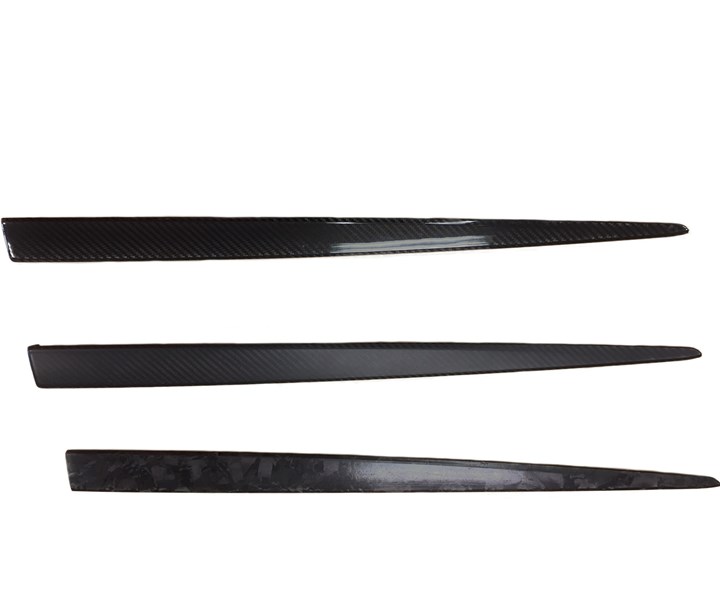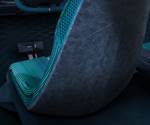Hexcel, NaCa Systems develop hybrid carbon/wood fiber composite car seat back
Benefits are said to include a 40% weight savings and improved carbon footprint.

Source | Hexcel
Hexcel Corp. (Stamford, Conn., U.S.) is collaborating with NaCa Systems, a Tier 1 supplier of natural fiber composite automotive interior parts, to develop a lightweight carbon fiber prepreg and wood fiber composite sportscar seat back using a rapid press molding process.
The goal? To validate a short cycle time process for hybrid carbon fiber-reinforced polymer (CFRP) and wood fiber composite parts.
As part of the project, Hexcel supplies NaCa Systems with an optimized version of its HexPly M77CS epoxy prepreg material. According to the company, HexPly M77CS is a fast curing hotmelt, thermosetting epoxy matrix, specifically designed for prepreg applications for which short cure cycles and clear surfaces with perfect aesthetics are required.

Source | Hexcel
Hexcel’s newly developed version of the M77CS prepreg has an increased resin content to optimize the CFRP to wood fiber composite bond strength despite the slightly higher resin uptake seen with the natural material component. The carbon fiber prepreg is cured at around 145˚C for four to five minutes and can be fully integrated into NaCa Systems existing production lines and metallic tooling.
The benefits of the hybrid composite component are said to include a 40% weight savings compared to a typical injection-molded plastic component, plus an improved carbon footprint compared to a fully carbon fiber part. Unlike plastic molded parts, the prepreg and wood fiber structure doesn’t produce sharp edged pieces when damaged, increasing passenger safety in crash scenarios, and the wood fiber composites increase sound absorption for improved NVH damping within the vehicle.
“... For us, it is important to work with a prepreg supplier who can tailor the materials to work with our processes and that can deliver consistent quality as we grow rapidly in response to OEM’s continued drive for more sustainable composite solutions,” says Aleš Kopal, CEO of NaCa Systems, on working with Hexcel.
Related Content
-
The lessons behind OceanGate
Carbon fiber composites faced much criticism in the wake of the OceanGate submersible accident. CW’s publisher Jeff Sloan explains that it’s not that simple.
-
Plant tour: Albany Engineered Composites, Rochester, N.H., U.S.
Efficient, high-quality, well-controlled composites manufacturing at volume is the mantra for this 3D weaving specialist.
-
Infinite Composites: Type V tanks for space, hydrogen, automotive and more
After a decade of proving its linerless, weight-saving composite tanks with NASA and more than 30 aerospace companies, this CryoSphere pioneer is scaling for growth in commercial space and sustainable transportation on Earth.

.jpg;width=70;height=70;mode=crop)














